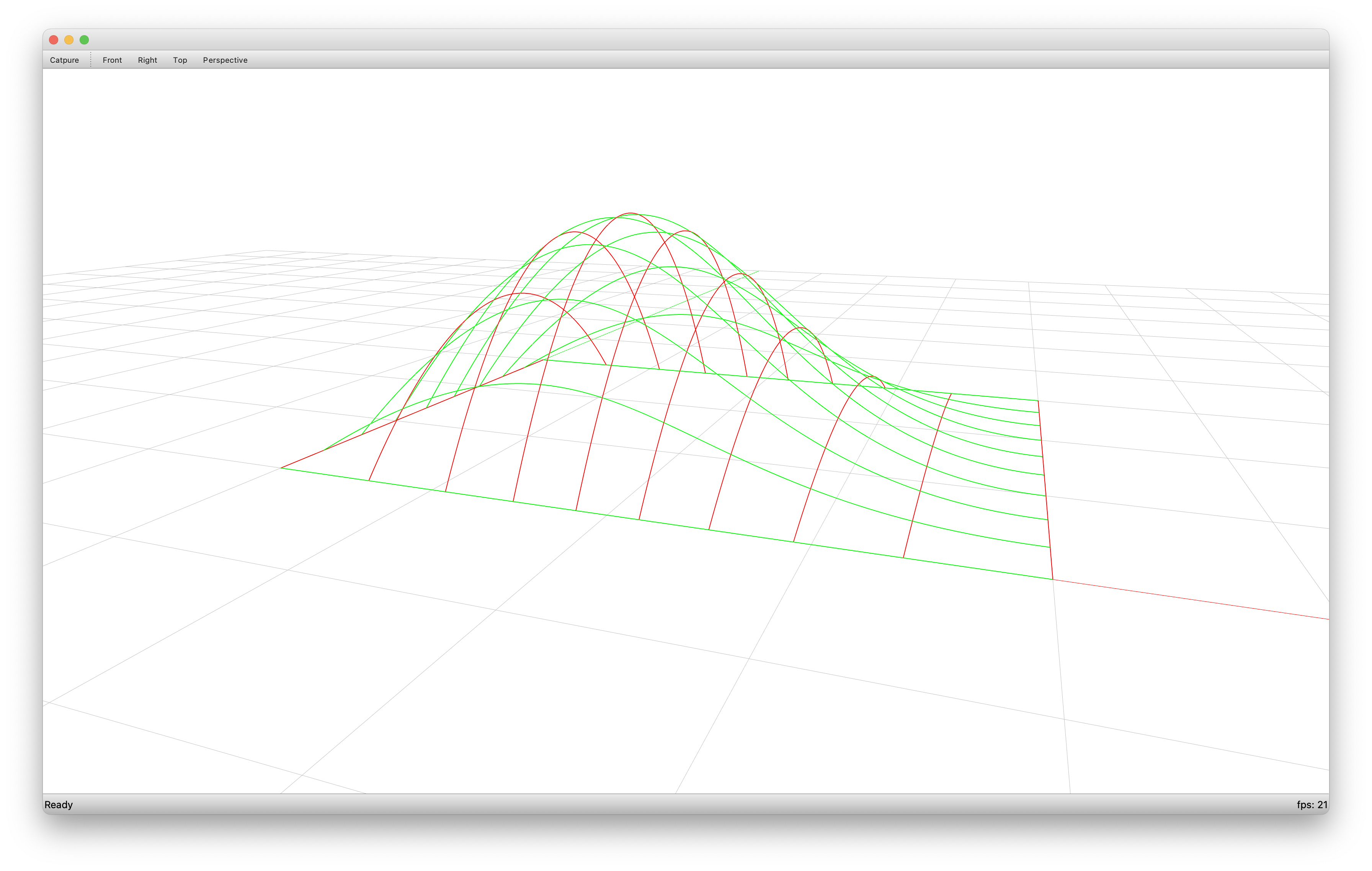from compas.geometry import Point, Polyline
from compas_occ.geometry import NurbsSurface
from compas_view2.app import App
points = [
[Point(0, 0, 0), Point(1, 0, 0), Point(2, 0, 0), Point(3, 0, 0), Point(4, 0, 0)],
[Point(0, 1, 0), Point(1, 1, 2), Point(2, 1, 2), Point(3, 1, 0), Point(4, 1, 0)],
[Point(0, 2, 0), Point(1, 2, 2), Point(2, 2, 2), Point(3, 2, 0), Point(4, 2, 0)],
[Point(0, 3, 0), Point(1, 3, 0), Point(2, 3, 0), Point(3, 3, 0), Point(4, 3, 0)],
]
surface = NurbsSurface.from_points(points=points)
# print(surface)
# ==============================================================================
# Isocurves
# ==============================================================================
u_curves = []
for u in surface.u_space():
u_curves.append(surface.u_isocurve(u))
v_curves = []
for v in surface.v_space():
v_curves.append(surface.v_isocurve(v))
# ==============================================================================
# Visualisation
# ==============================================================================
view = App()
# for row in surface.points:
# view.add(Polyline(row), show_points=True, pointsize=20, pointcolor=(1, 0, 0), linewidth=2, linecolor=(1.0, 0, 0))
# for col in zip(* surface.points):
# view.add(Polyline(col), linewidth=2, linecolor=(0, 1.0, 0))
# view.add(surface.to_mesh(u=50), show_edges=False)
for curve in u_curves:
view.add(Polyline(curve.locus()), linecolor=(1, 0, 0), linewidth=2)
for curve in v_curves:
view.add(Polyline(curve.locus()), linecolor=(0, 1, 0), linewidth=2)
view.run()
